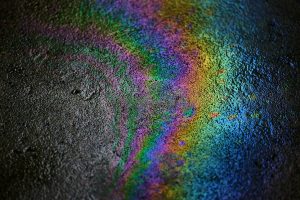Oil spills can have serious consequences for the environment and communities in Perth. Whether it’s a minor leakage or a major spill, acting quickly is vital in reducing harm. Each oil spill presents unique challenges, but having a well-prepared plan can make a significant difference.
Addressing an oil spill involves understanding the immediate risks it poses. From environmental damage to health concerns, recognising these impacts is crucial. Quick and effective response is necessary to contain the spill and begin the clean-up process without delay.
Taking the right steps promptly will help protect the environment and adhere to legal requirements. With informed actions and appropriate tools, the risk of further complications is minimised, ensuring the safety of all involved.
Understanding the Immediate Risks of an Oil Spill
Oil spills present significant risks to both the environment and human health. When oil spills occur, ecosystems can suffer greatly. Marine life faces immediate threats as oil can coat birds, fish, and other wildlife, leading to suffocation, poisoning, and disrupted food chains. On land, oil can seep into the soil, affecting plant life and contaminating water sources.
For humans, oil spills pose health hazards, including respiratory problems and skin irritations. People living near spill sites may experience long-term health issues due to prolonged exposure to toxins found in oil. This makes immediate action crucial to minimise harm.
Common causes of oil spills in Perth include industrial accidents, shipping accidents, and tanks leaking oil into water bodies. Understanding these causes helps in preparing effective response strategies.
If oil spills are not managed quickly, they can have long-term environmental effects. These include lasting damage to ecosystems, reduced biodiversity, and decreased productivity of fishing industries. Restoring affected areas can take years. Recognising the immediate and long-term risks underscores the importance of having a rapid response plan.
Immediate Safety Precautions to Implement
Responding to an oil spill begins with ensuring safety. First, it is essential to evacuate and secure the affected area. This helps protect the public from inhaling fumes or coming into direct contact with the oil. Warning signs should be posted, and access to the site restricted.
For those involved in the clean-up, using the right safety gear is a must. This includes wearing protective clothing, masks, and gloves to prevent skin contact and inhalation of harmful fumes. Proper safety gear reduces health risks for workers and ensures the clean-up is conducted safely.
Notifying authorities is another critical step. It is important to follow guidelines from local government and environmental agencies. Early notification allows experts to assess the situation and provide support where needed.
By following these safety precautions, you can contain risks efficiently and reduce potential damage. This approach ensures the swift management of the situation while protecting both the environment and people involved.
Effective Clean-Up Methods for Oil Spills
Addressing the aftermath of an oil spill requires effective clean-up methods to minimise environmental damage. The first step in the clean-up process involves containment. Containment booms are commonly used to encircle and prevent the spread of oil, particularly on water surfaces. Skimmers can then extract the oil safely from the water.
Absorbent materials, often made from natural fibres or synthetic alternatives, play a crucial role. These materials soak up oil spills on land and can be safely disposed of once saturated. Using dispersants is another technique; these chemicals break down oil so it degrades more quickly in the environment, though their use must be carefully monitored for environmental safety.
Specialised equipment is crucial for efficient spill management. Devices such as vacuum trucks and automated skimmers provide precise and swift removal, ensuring less residual oil is left behind. It’s important for clean-up teams to utilise these tools to manage the spill site effectively.
Each member of the clean-up crew has specific responsibilities. Coordinating their efforts ensures tasks are carried out proficiently, preventing duplication of efforts and optimising resources. Clear communication and well-defined roles are pivotal for a successful clean-up operation, ensuring a fast response and minimised impact.
Compliance and Environmental Recovery
Following an oil spill, compliance with environmental laws and recovery plans is essential. Understanding the Environmental Protection Authority (EPA) guidelines helps in navigating legal requirements and sets a framework for the recovery process. These regulations ensure that the clean-up meets safety and environmental standards.
Steps for site restoration begin with thorough assessments of the affected area. This involves checking soil and water quality, removing contaminated debris, and rehabilitating local flora and fauna. Ongoing environmental monitoring ensures the long-term health of the ecosystem and identifies any lingering impacts.
Having an emergency response plan in place is vital for future preparedness. This plan should outline clear procedures for immediate action, assign roles to personnel, and incorporate regular training sessions. A well-drafted plan can greatly reduce the time taken to respond to spills, minimising further environmental harm and legal complications.
Conclusion
Oil spills pose significant challenges that require immediate and strategic action to protect the environment and communities. Implementing prompt safety precautions, effective clean-up methods, and ensuring compliance with environmental laws are key to handling these incidents. These steps pave the way for effective recovery and resilience.
When dealing with such environmental emergencies, having reliable experts makes a difference. iVac WA offers comprehensive excavation solutions to manage oil spills with precision and care. Trust us to help protect your environment while ensuring compliance with all necessary guidelines. Contact iVac WA today to see how we can support your needs in emergency spill management.

